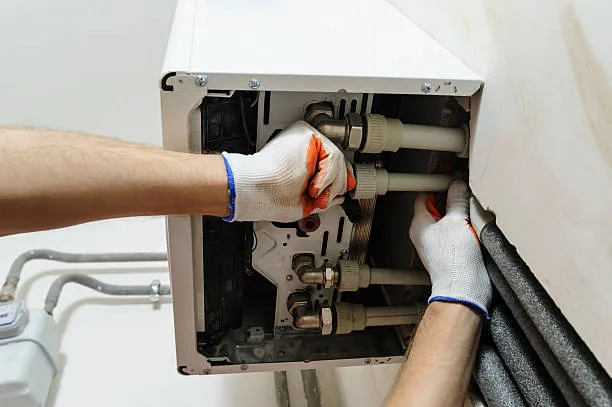Heating Tune-Up in Sloughhouse, CA
A professional heating tune-up in Sloughhouse, CA protects your home, improves comfort, and reduces the risk of mid-winter breakdowns. Whether you have a gas furnace, electric furnace, heat pump, or hybrid system, a thorough tune-up addresses the predictable wear that comes from seasonal temperature swings, high dust loads after wildfire smoke events, and homes near agricultural activity. A tune-up is a decision-stage service: it’s about ensuring reliability, safety, and measurable efficiency gains before you need a costly repair.
Why a tune-up matters for Sloughhouse homes
- Sloughhouse sees hot summers and cool winters with occasional cold snaps that stress heating equipment during transitions.
- Local dust, pollen, and wildfire smoke increase particulate buildup in filters, burners, and ducts, reducing airflow and efficiency.
- Rural and semi-rural homes often have longer duct runs and older systems that benefit most from professional adjustments and sealing.
A tune-up helps you avoid emergency service calls, reduces energy waste during the heating season, and lowers carbon monoxide and fire risks from neglected equipment.
Common heating issues found in Sloughhouse, CA
- Dirty or clogged air filters causing low airflow and short cycling
- Soiled burners, coils, and heat exchangers that lower combustion efficiency
- Thermostat drift or incorrect calibration leading to uneven temperatures and higher bills
- Duct leaks and poor airflow from disconnected or unsealed joints
- Ignition problems, pilot failures, or control board errors in older units
- Minor carbon monoxide leaks from cracked heat exchangers or blocked vents
What a professional heating tune-up includes
A complete tune-up is more than a quick filter change. Expect a multi-point, systematic service that covers safety, performance, and documentation.
- Multi-point system inspection
- Visual and operational inspection of the furnace/heat pump, flue and venting, access panels, electrical connections, and control components.
- Checks for corrosion, cracks, loose fittings, and evidence of past overheating or combustion issues.
- Cleaning of burners, coils, and heat exchangers
- Remove soot, dust, and debris from burners and combustion areas to restore proper flame patterns and heat transfer.
- Clean evaporator and condenser coils on heat pumps to improve heat exchange and system capacity.
- Safety and carbon monoxide checks
- Combustion analysis and flue inspection to confirm proper venting and safe operation.
- Carbon monoxide checks at the unit and in the immediate living space to detect unsafe CO levels.
- Thermostat calibration and control checks
- Verify setpoint accuracy, thermostat wiring, and control logic.
- For programmable or smart thermostats, confirm schedules and sensors are functioning properly.
- Airflow and duct checks
- Measure airflow where possible, inspect central registers, and look for restricted returns or supply leaks.
- Recommend sealing, insulation, or balancing if significant duct losses are identified.
- Performance testing and system adjustments
- Test starting amperage, voltages, and safety cutoffs.
- Verify proper gas pressure or refrigerant charge on heat pumps, and adjust blower speeds and limit switches for optimal operation.
- Documentation and recommendations
- A written summary of findings, recommended repairs, and estimated improvements so you can make informed decisions.
Typical diagnostic and service process
- Begin with system startup and a general walk-around inspection.
- Shut down power and perform targeted cleaning of burners, coils, and accessible components.
- Reconnect and run combustion and CO tests, then verify thermostat behavior.
- Evaluate airflow and visually inspect ductwork and vents.
- Run performance tests under load to confirm temperature rise, cycling behavior, and electrical readings.
- Provide a concise report with safety observations and maintenance suggestions.
What improvements to expect
- Improved efficiency: Many systems regain up to 10 to 20 percent efficiency after cleaning and proper adjustment; exact savings vary with system age and condition.
- Better reliability: Tune-ups catch small problems before they become failures, reducing the chance of a no-heat emergency.
- Quieter operation and more consistent temperatures from reduced short cycling and better airflow.
- Safer operation with minimized carbon monoxide risk and corrected venting or combustion issues.
- Longer equipment life: Routine professional maintenance reduces wear on motors, burners, and control components.
Frequency recommendations for Sloughhouse residents
- Perform a full professional heating tune-up annually before the heating season begins. This timing ensures safe, efficient operation when you need heat.
- Consider semiannual checks if your home experiences heavy dust, recent wildfire smoke exposure, or if you have a high-use system (short-cycling, frequent on/off cycles).
- Older systems (10+ years) or equipment with a history of problems benefit from closer monitoring and possibly more frequent inspections.
Safety and carbon monoxide: what technicians check and why it matters
Carbon monoxide is odorless and can result from incomplete combustion or cracked heat exchangers. A tune-up includes:
- Combustion testing to confirm proper fuel-to-air ratios and clean burning.
- Visual inspection of heat exchangers and flue connections for cracks or corrosion.
- Venting checks to ensure exhaust gases are directed outdoors without obstruction.
These steps significantly reduce the risk of CO exposure and are critical for homes with attached garages, airtight construction, or older furnaces.
Everyday maintenance tips for Sloughhouse homeowners
- Replace or clean air filters monthly during heavy use months; use filters rated for your system and household needs.
- Keep outdoor intake and exhaust vents clear of vegetation, debris, and stored materials.
- Limit indoor particulates by using exhaust fans when cooking and changing HVAC filters more often after wildfire smoke events.
- Program your thermostat for efficient setbacks and avoid frequent manual overrides that increase cycling.
- Monitor unusual noises, odors, or cycling behavior and schedule a professional check before small issues escalate.
Other Services
Customer Testimonials
See what our satisfied customers have to say about their experience with Always Affordable
Plumbing & HVAC.






